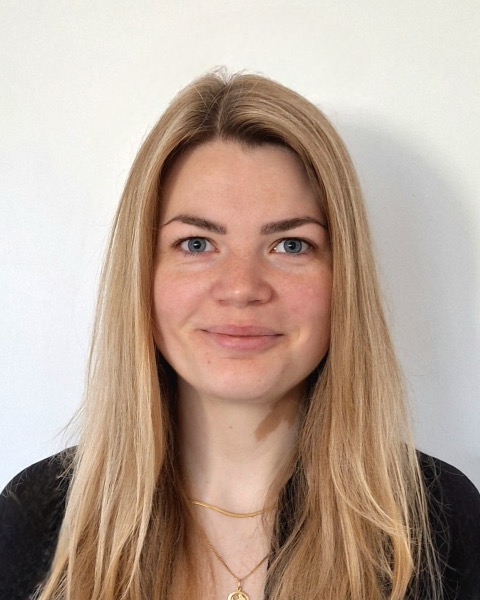Ovary/Oocyte
Poster Session B
(P-324) The Alpha 7 Nicotinic Acetylcholine Receptor (CHRNA7) May Limit Inflammatory Responses in Cultured Human Granulosa Cells
Thursday, July 18, 2024
8:00 AM - 9:45 AM IST
Room: The Forum
- AM

Pia Seßenhausen, Master of Science
PhD
Ludwig-Maximilians-Universität (LMU), Bayern, Germany
Poster Presenter(s)
Author(s)
Abstract Authors: Pia Seßenhausen1, Karolina M. Caban2, Katja Eubler1, Nicole Kreitmair1, Michaela Schneider1, Julia Schneider1, Dieter Berg3, Ulrike Berg3, Thomas Fröhlich2, Artur Mayerhofer1
1 Biomedical Center (BMC), Cell Biology, Anatomy III, Faculty of Medicine, Ludwig Maximilian University Munich (LMU), 82152 Planegg, Germany
2 Laboratory for Functional Genome Analysis LAFUGA, Gene Center, LMU, 81377 Munich, Germany
3 Fertility Centre A.R.T., Bogenhausen, 81675 Munich, Germany
Abstract Text: Previous studies suggested that the neurotransmitter acetylcholine (ACh) may play a role in the regulation of the ovary. One of its target receptors is the alpha 7 nicotinic ACh receptor (CHRNA7; encoded by CHRNA7). This member of the nicotinic ACh receptor superfamily of ligand-gated ion channels is best known for fast signal transmission in neurons. It is, however, also expressed in various non-neuronal cells, where its roles are associated with different cellular functions, including anti-inflammatory responses. We recently found this receptor in the mouse female gonad in stromal cells, macrophages and oocytes. Examination of adult female Chrna7-knockout mouse ovaries indicated involvement in gonadal functions, including follicle development. According to the Human Protein Atlas, CHRNA7 is expressed in human ovarian cells, e.g. stromal cells and oocytes and, in contrast to the mouse ovary, also in granulosa cells (GCs). Therefore, the objectives of this study were to verify expression in the human ovary and to examine functions in cultured in vitro fertilization-derived GCs. By performing immunohistochemistry, we confirmed expression in follicular GCs and the cells of the Corpus Luteum. Expression was retained in cultured GCs, as indicated by qPCR, Western blotting and immunocytochemistry. Preliminary results reveal that its activation by the selective CHRNA7-agonist PNU 282987 can evoke elevations of intracellular calcium in GCs, indicating channel functionality. While GCs and luteal cells are regulated by gonadotropins, CHRNA7 transcript levels were not affected by human chorionic gonadotropin (qPCR: n = 7) or forskolin (qPCR: n = 12), a potent cAMP activator. As in non-neuronal cells, the activation of CHRNA7 is associated, among others, with anti-inflammatory responses, we investigated this possibility in human GCs. We used Lipopolysaccharide (LPS) to induce an acute inflammatory response. We found that PNU 282987 reduced the LPS-induced IL-6/IL-8 release (qPCR: n = 7, ELISA: n = 6), implicating a role of CHRNA7 in immunological events. Hypoxia also leads to increased production of cytokines by GCs and preliminary data suggest that the selective activation of CHRNA7 by PNU 282987 can inhibit pro-inflammatory responses evoked by hypoxia (qPCR: n = 4). Proteomic studies employing PNU 282987-stimulated GCs are currently being conducted to examine further roles of this channel. Of note, the expression of the human-specific variant of CHRNA7, namely CHRFAM7A, was also detected in GCs. Its role as a possible negative regulator needs to be investigated. In conclusion, the results obtained so far demonstrate expression of CHRNA7 in the human ovary and GCs and identify a role of CHRNA7 in limiting inflammatory responses.
(Supported by Deutsche Forschungsgemeinschaft (DFG), project number 4324342)
1 Biomedical Center (BMC), Cell Biology, Anatomy III, Faculty of Medicine, Ludwig Maximilian University Munich (LMU), 82152 Planegg, Germany
2 Laboratory for Functional Genome Analysis LAFUGA, Gene Center, LMU, 81377 Munich, Germany
3 Fertility Centre A.R.T., Bogenhausen, 81675 Munich, Germany
Abstract Text: Previous studies suggested that the neurotransmitter acetylcholine (ACh) may play a role in the regulation of the ovary. One of its target receptors is the alpha 7 nicotinic ACh receptor (CHRNA7; encoded by CHRNA7). This member of the nicotinic ACh receptor superfamily of ligand-gated ion channels is best known for fast signal transmission in neurons. It is, however, also expressed in various non-neuronal cells, where its roles are associated with different cellular functions, including anti-inflammatory responses. We recently found this receptor in the mouse female gonad in stromal cells, macrophages and oocytes. Examination of adult female Chrna7-knockout mouse ovaries indicated involvement in gonadal functions, including follicle development. According to the Human Protein Atlas, CHRNA7 is expressed in human ovarian cells, e.g. stromal cells and oocytes and, in contrast to the mouse ovary, also in granulosa cells (GCs). Therefore, the objectives of this study were to verify expression in the human ovary and to examine functions in cultured in vitro fertilization-derived GCs. By performing immunohistochemistry, we confirmed expression in follicular GCs and the cells of the Corpus Luteum. Expression was retained in cultured GCs, as indicated by qPCR, Western blotting and immunocytochemistry. Preliminary results reveal that its activation by the selective CHRNA7-agonist PNU 282987 can evoke elevations of intracellular calcium in GCs, indicating channel functionality. While GCs and luteal cells are regulated by gonadotropins, CHRNA7 transcript levels were not affected by human chorionic gonadotropin (qPCR: n = 7) or forskolin (qPCR: n = 12), a potent cAMP activator. As in non-neuronal cells, the activation of CHRNA7 is associated, among others, with anti-inflammatory responses, we investigated this possibility in human GCs. We used Lipopolysaccharide (LPS) to induce an acute inflammatory response. We found that PNU 282987 reduced the LPS-induced IL-6/IL-8 release (qPCR: n = 7, ELISA: n = 6), implicating a role of CHRNA7 in immunological events. Hypoxia also leads to increased production of cytokines by GCs and preliminary data suggest that the selective activation of CHRNA7 by PNU 282987 can inhibit pro-inflammatory responses evoked by hypoxia (qPCR: n = 4). Proteomic studies employing PNU 282987-stimulated GCs are currently being conducted to examine further roles of this channel. Of note, the expression of the human-specific variant of CHRNA7, namely CHRFAM7A, was also detected in GCs. Its role as a possible negative regulator needs to be investigated. In conclusion, the results obtained so far demonstrate expression of CHRNA7 in the human ovary and GCs and identify a role of CHRNA7 in limiting inflammatory responses.
(Supported by Deutsche Forschungsgemeinschaft (DFG), project number 4324342)
